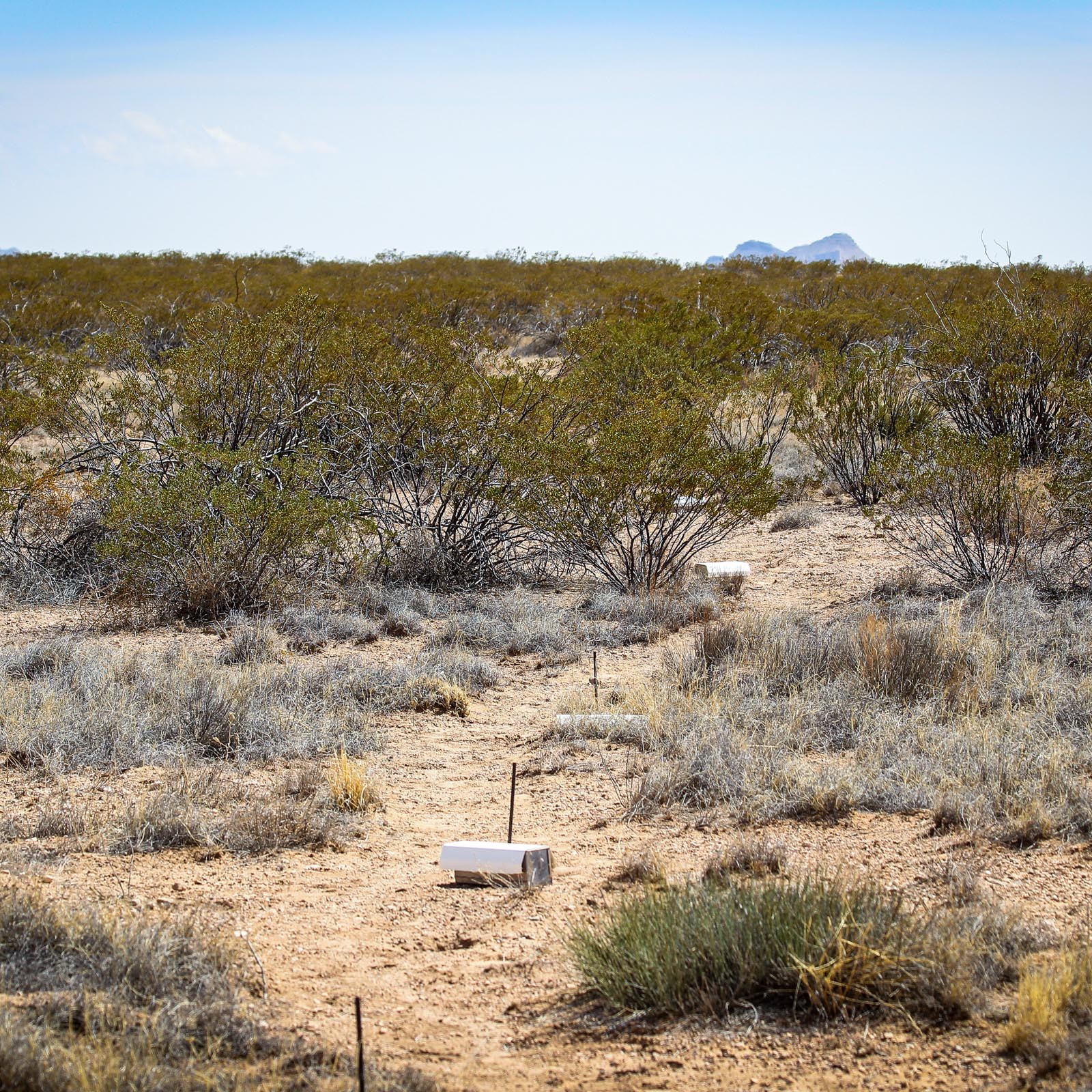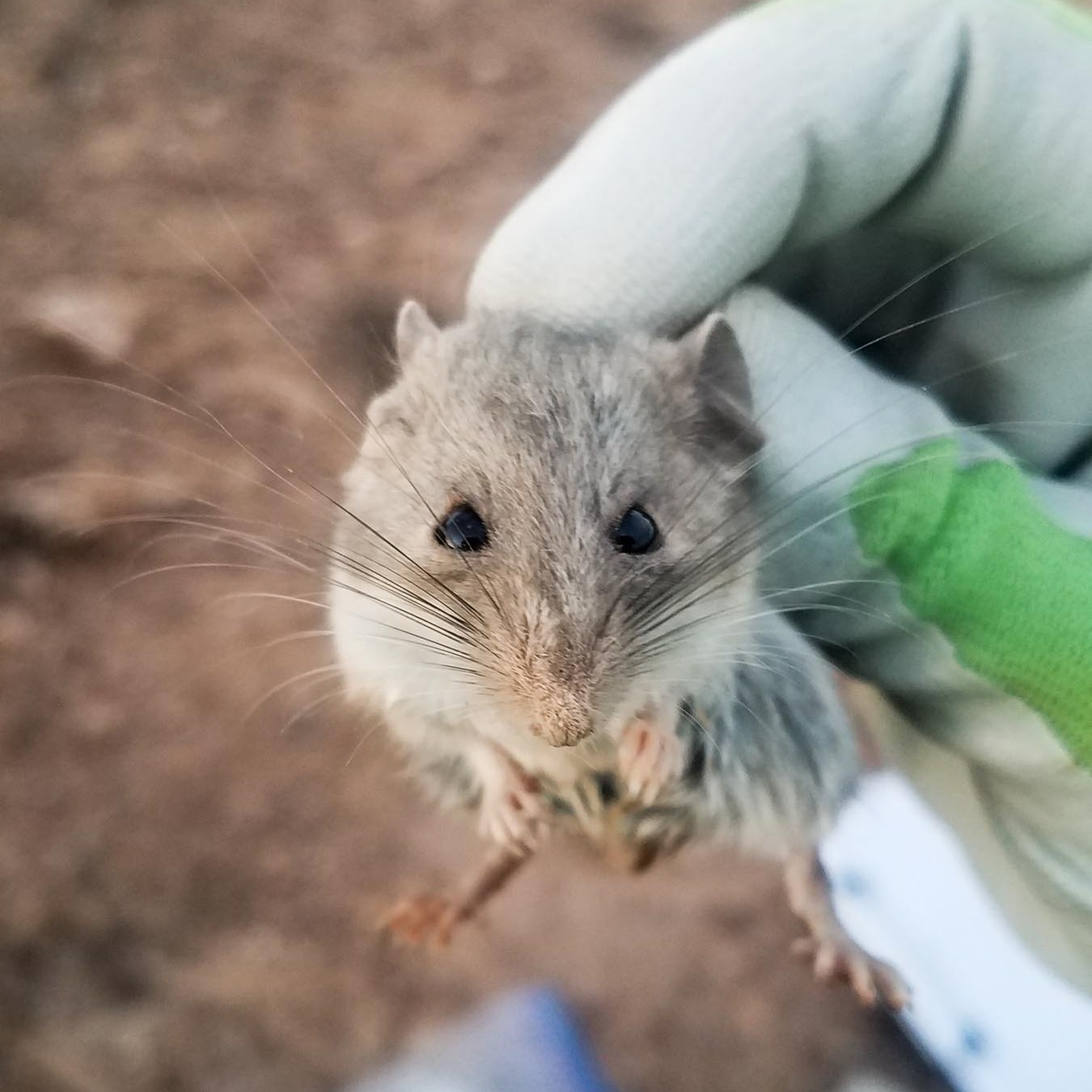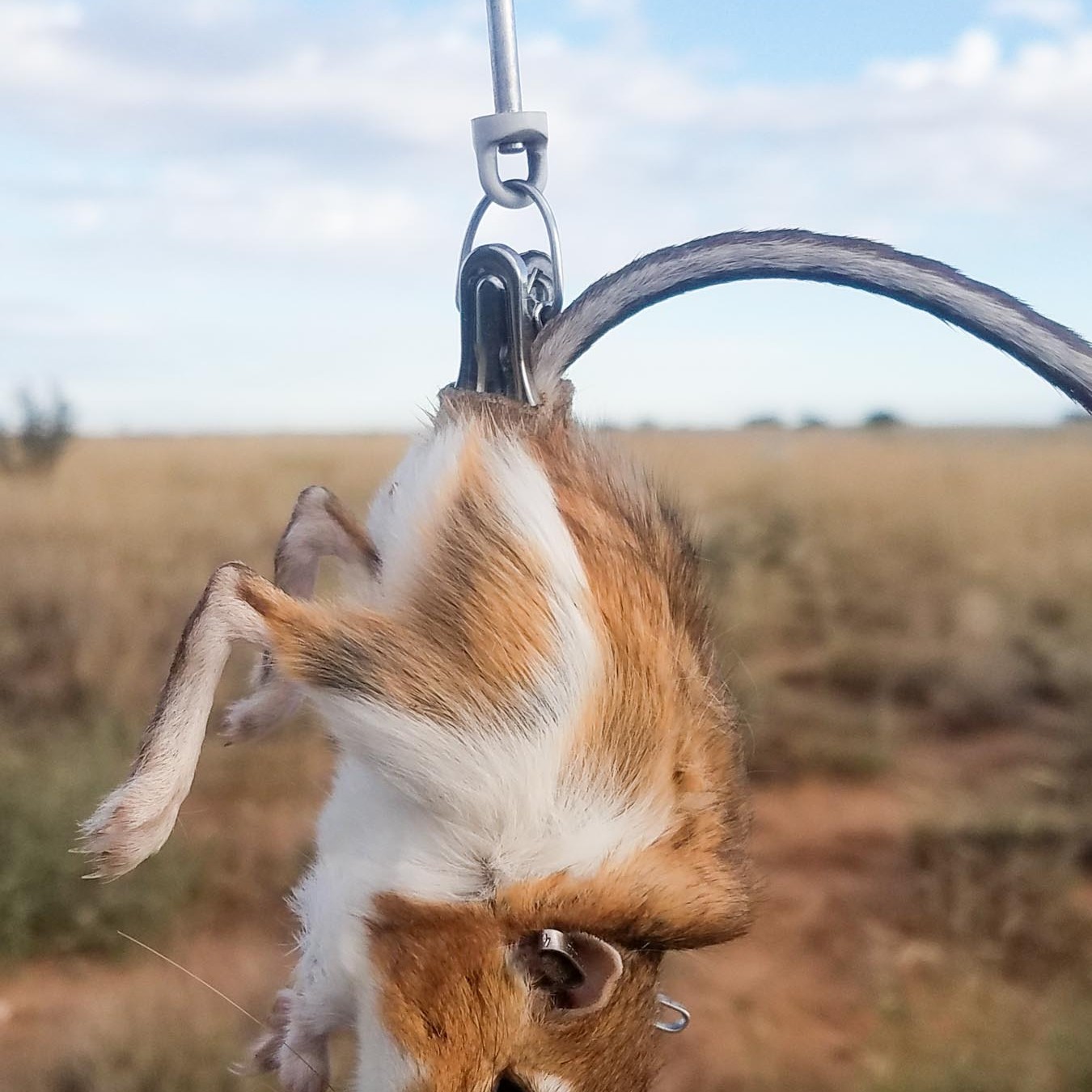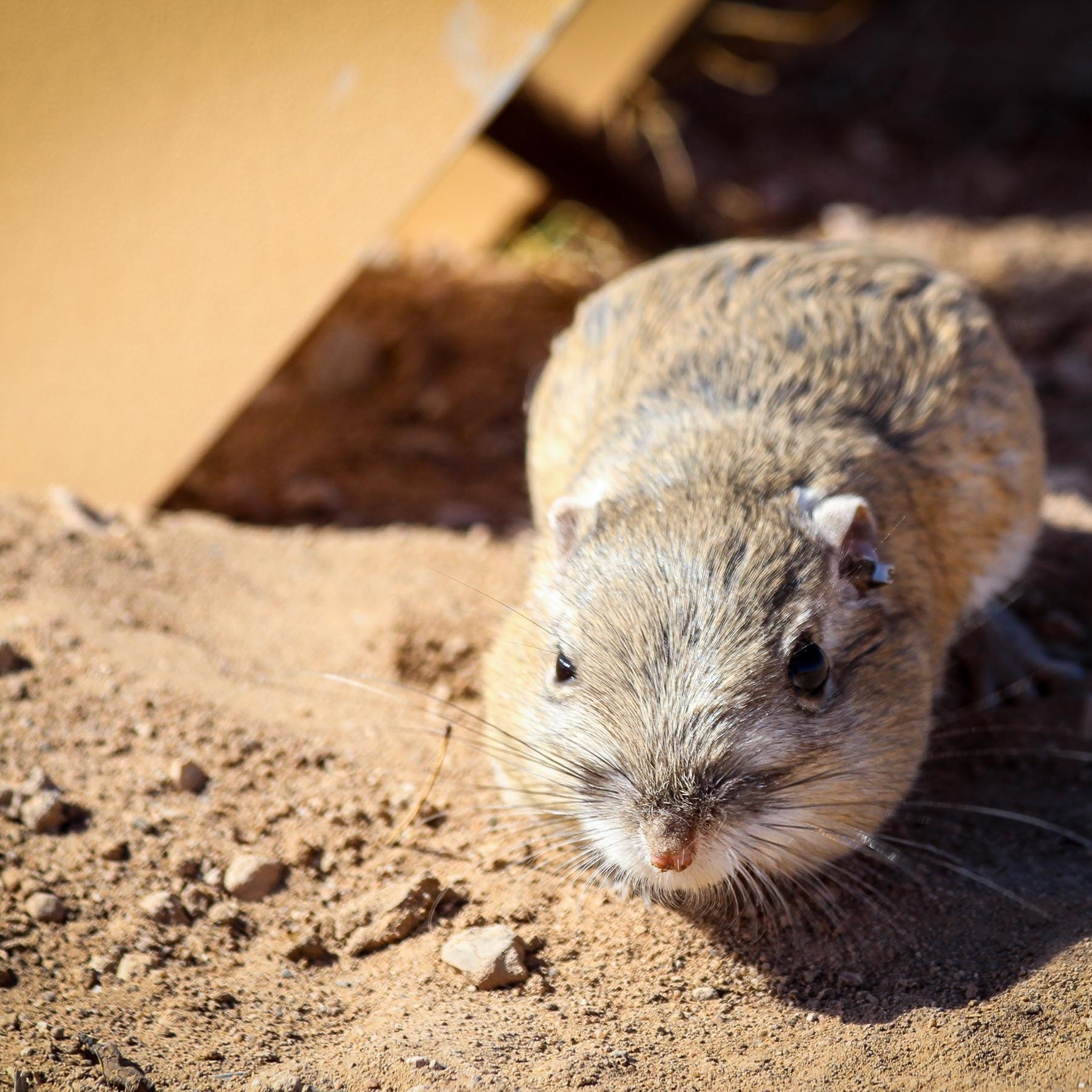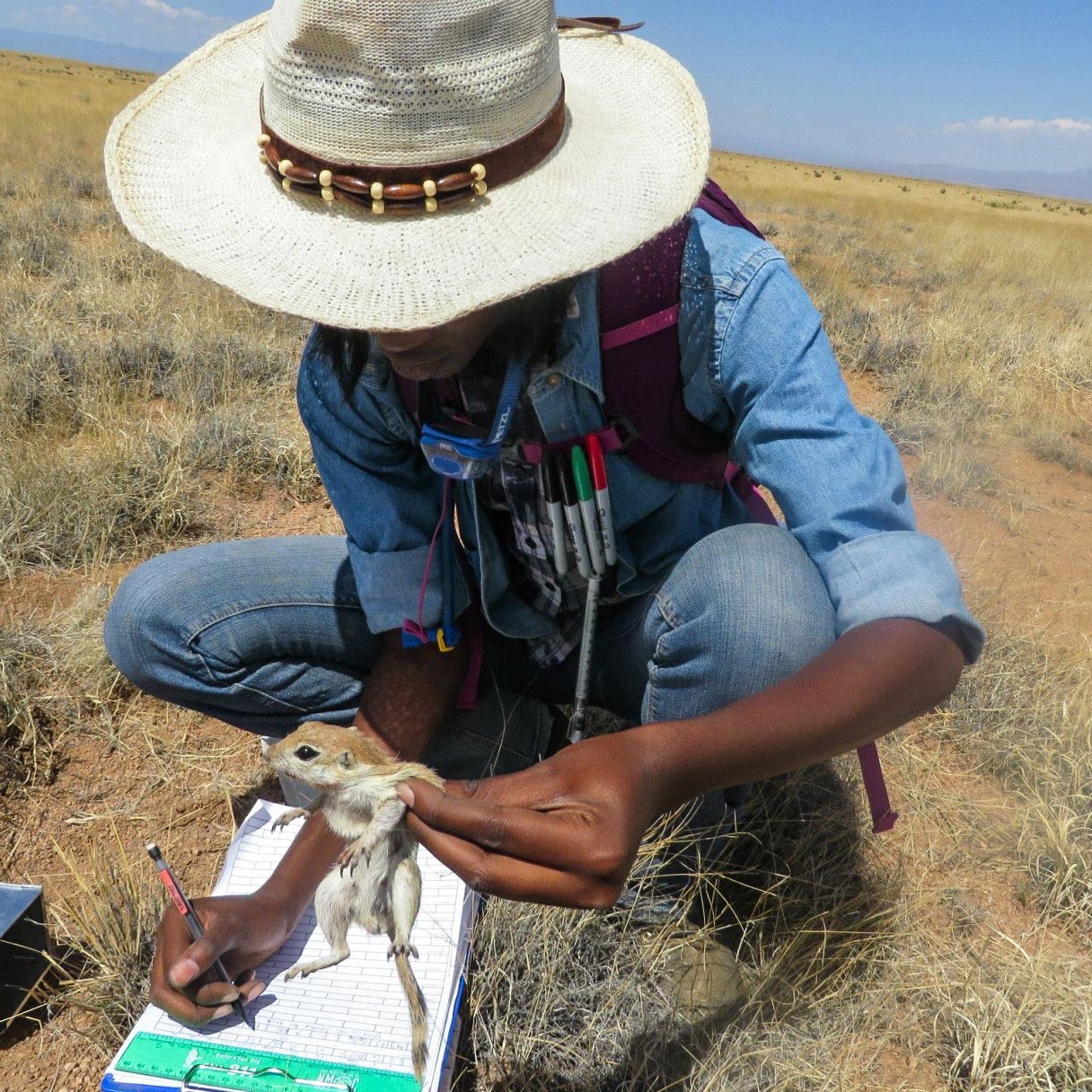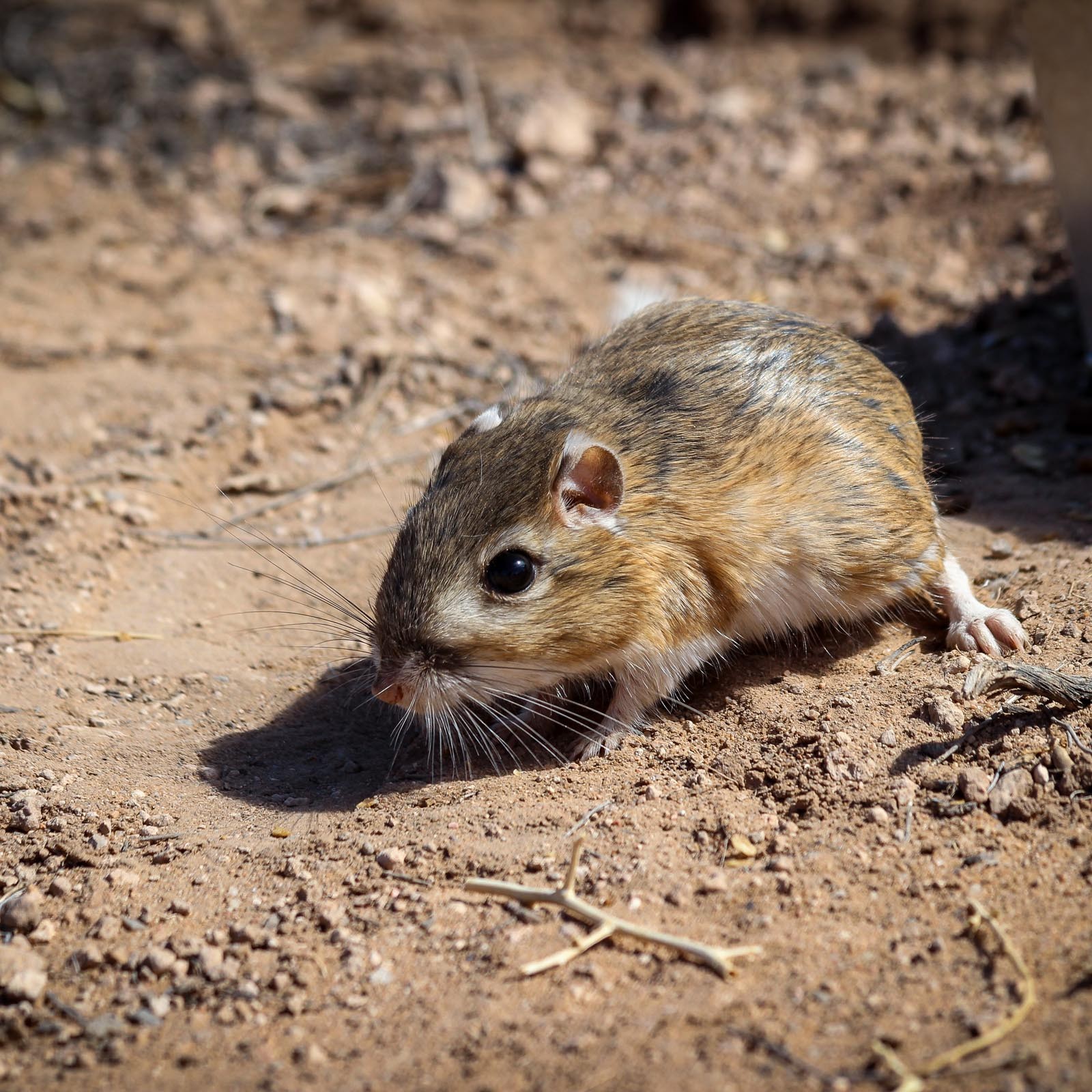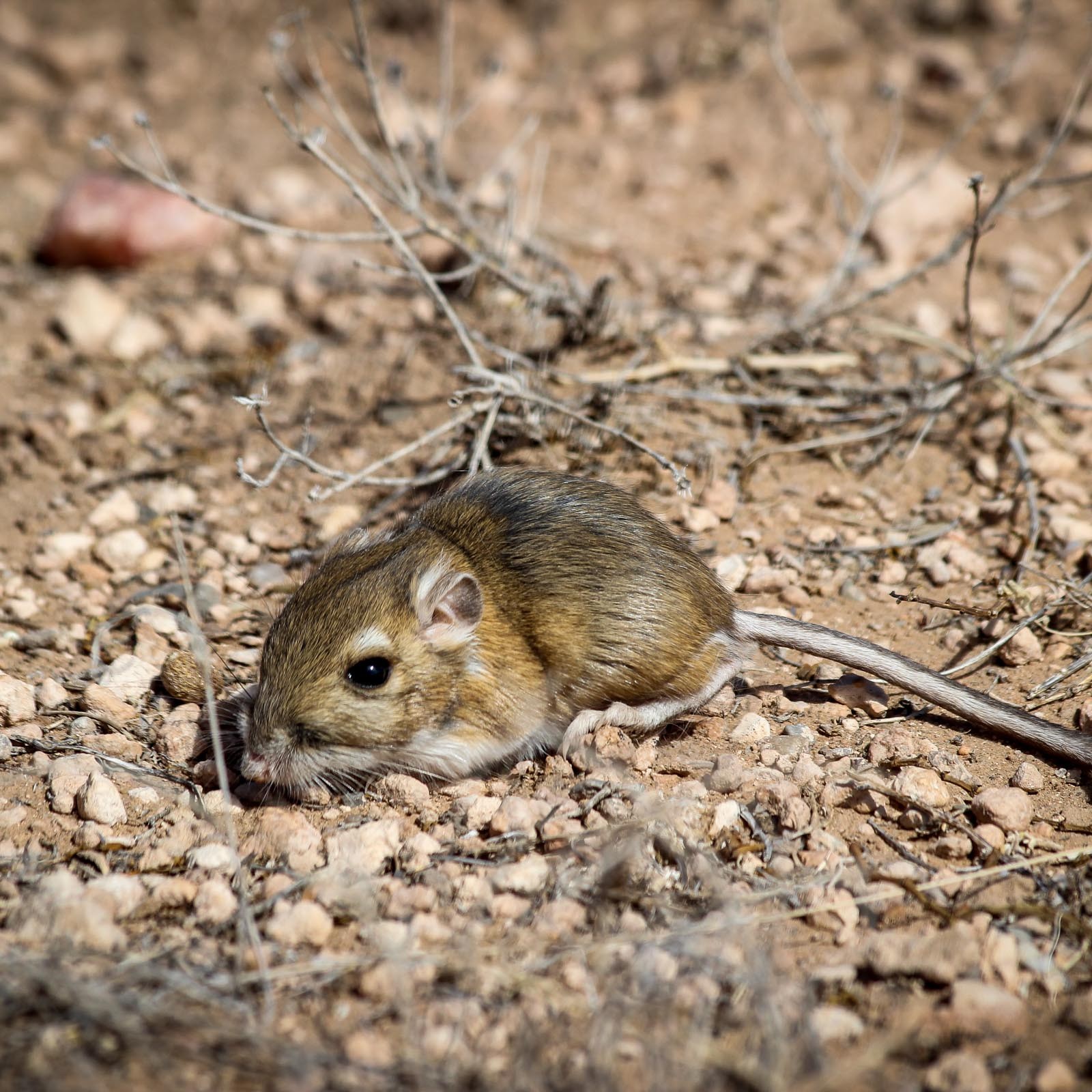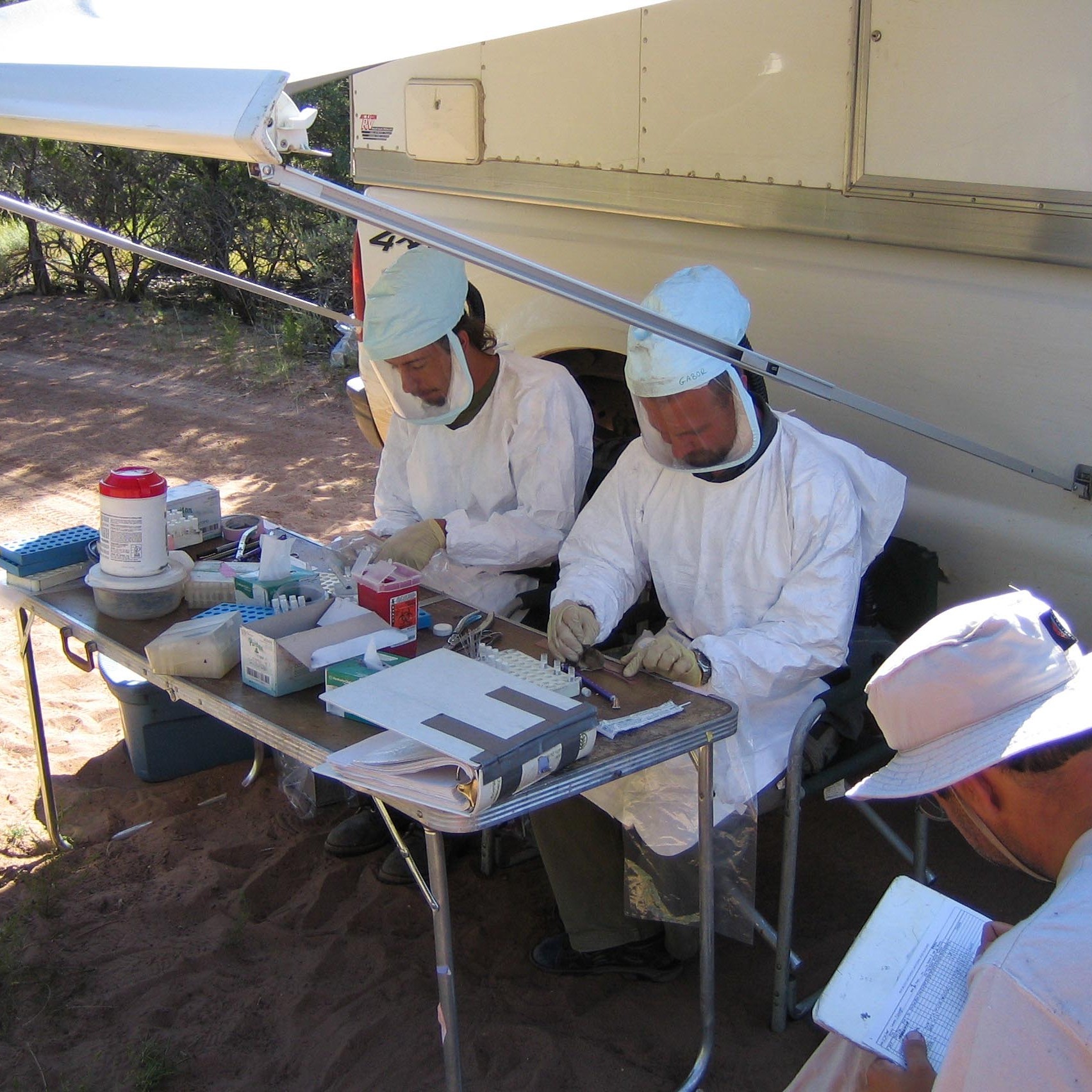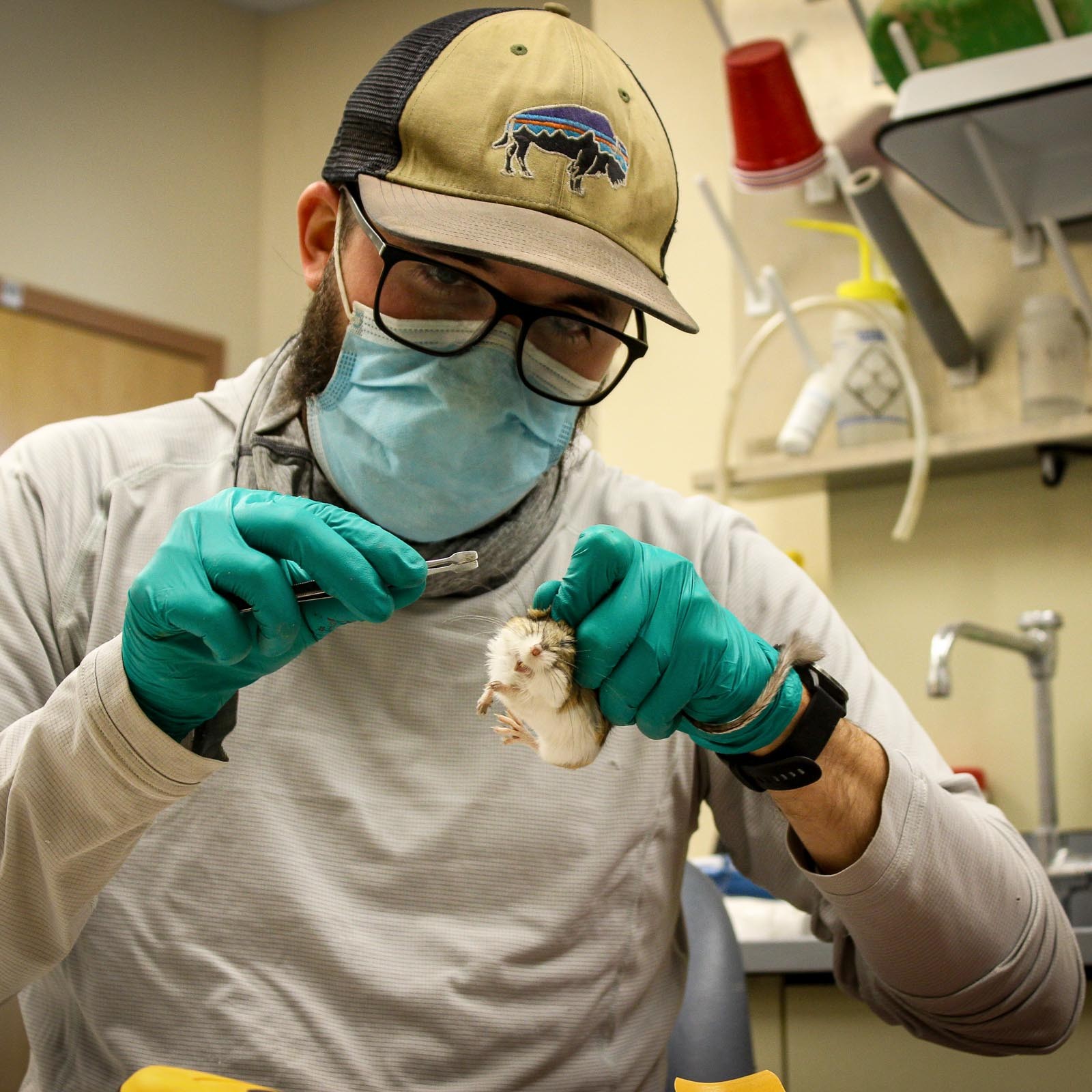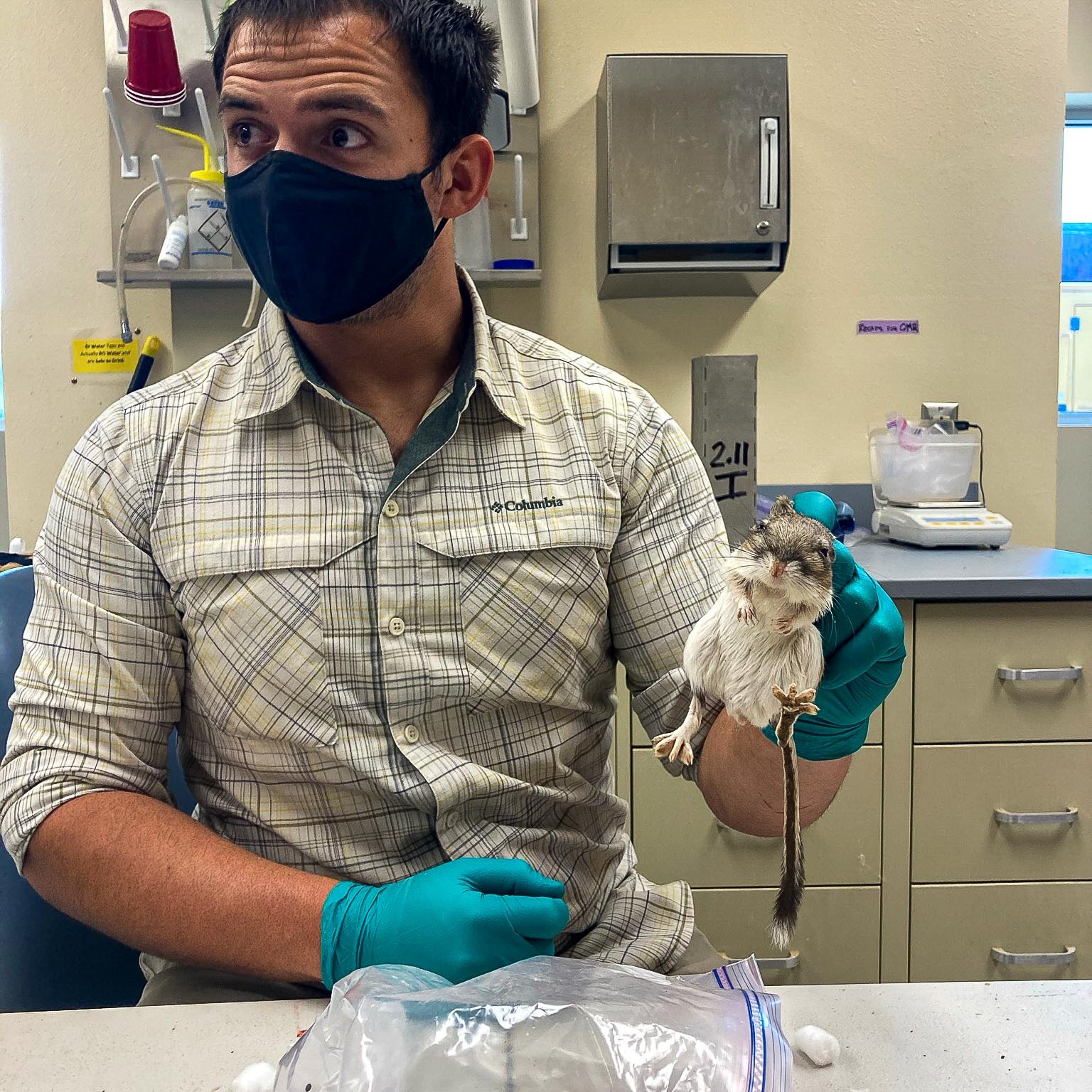Objective:
Desert consumers are integral to the ecosystems of the Sevilleta. We examine how rodent diversity and abundance change over time, tracking climate and plant-based resources since 1989.
Novelty:
Our long-term trapping program has continuously monitored small mammals at the Sevilleta National Wildlife Refuge, where distinctive ecosystems collide. These data provide some of the world’s longest continuous records on dryland rodent communities. Current monitoring includes core sites in Chihuahuan Desert grassland, Plains grassland, and Desert shrubland dominated by creosotebush, with data extending back to 1989. Prior, shorter-term monitoring included sites in piñon-juniper woodlands, other grassland and shrubland locations, and grass-shrub transition zones.
Design:
Small mammal trapping and data collection occur twice yearly, during spring and fall to capture pre-monsoon and post-monsoon changes in the population dynamics of dryland rodents. We monitor 31 small mammal species, with data spanning 8 sites (3 sites are current).
Responses:
Each rodent captured is identified to species, sexed, assessed for life stage, weighed, and then returned to the site of capture. Our web sampling design consists of 148 traps placed in a concentric circle (200m diameter) composed of 12 traps each on 12 spokes with four traps located at the center of the web facing all four cardinal directions. Sherman traps are baited nightly for three consecutive nights. Each core site has 5 replicate trapping webs.


